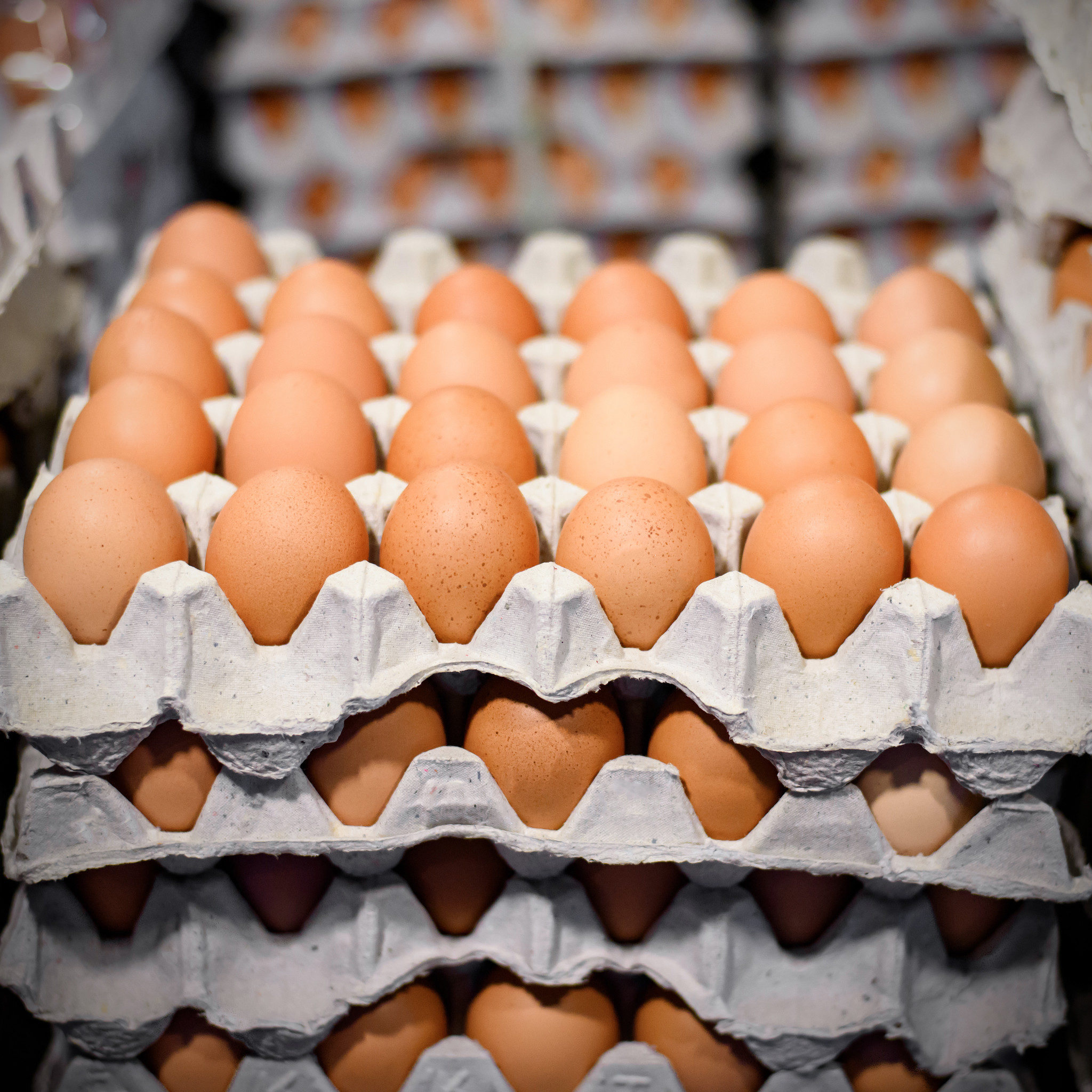
Image Source: 123rf.com
There was a time when grabbing eggs, bread, or butter didn’t leave you doing a double take at the checkout line. But, inflation and supply chain disruptions have turned some basic items into shocking splurges. Many shoppers are now walking past once-staple products, leaving shelves fuller than usual. As prices climb and budgets tighten, consumers are sending a clear message: some expensive groceries just aren’t worth it anymore. Here are eight everyday groceries that got too pricey—and as a result, shoppers are saying “no thanks.”
1. Eggs
Eggs were once the ultimate cheap protein, but not anymore. Prices spiked following bird flu outbreaks and feed supply issues, turning a dozen eggs into a luxury for many households. Some areas saw costs rise above $6 per carton, especially for organic or pasture-raised options. Consumers have responded by cutting back, switching to alternatives like tofu or skipping egg-heavy recipes. As far as expensive groceries go, eggs were the first item many shoppers stopped grabbing.
2. Butter
Butter prices have soared due to a combination of lower milk production and higher labor costs in the dairy industry. That small stick now comes with a hefty price tag, especially for name-brand or European-style varieties. Baking enthusiasts and everyday cooks alike have scaled back, choosing margarine or oil instead. In many kitchens, butter has gone from daily use to special occasions. It’s another casualty in the growing list of expensive groceries people are learning to live without.
3. Bacon
Bacon has always had a devoted following, but recent price increases are testing even the most loyal fans. Costs have risen due to labor shortages in processing plants and rising feed prices for pigs. A single pack can now exceed $9 in some regions, and that’s for standard cuts—not even the premium stuff. Some shoppers are skipping bacon altogether or turning to turkey bacon or plant-based alternatives. Once a breakfast favorite, bacon is now sitting in carts far less often thanks to its expensive groceries status.
4. Orange Juice
Fresh-squeezed might feel like a treat, but even store-brand orange juice has become a budget-buster. Citrus diseases in Florida and import costs have driven prices up, sometimes by over 30%. What used to be a morning staple has become an occasional splurge or been replaced by less costly alternatives like apple juice or water. Parents looking to keep breakfast affordable are skipping the OJ more often. Orange juice now stands out among expensive groceries that have lost their daily appeal.
5. Cereal
Boxed cereal used to be a quick and affordable breakfast solution, but not anymore. Between sugar, wheat, and packaging price hikes, some boxes are pushing $6–$7, even for popular brands. Families are turning to oatmeal or toast as more budget-friendly morning meals. On top of the price, shrinkflation means those boxes are smaller than ever. With less product and a higher cost, cereal is losing ground fast in the expensive groceries category.
6. Name-Brand Cheese
Cheese prices have steadily crept up, with inflation and dairy supply disruptions hitting the hardest. Name brands are especially costly—sometimes double the price of store brands or off-label options. Shoppers are choosing shredded blends, bulk sizes, or skipping the fancy wedges entirely. Cheese lovers may still indulge, but they’re getting choosy with what goes into their cart. As one of the most flexible ingredients, cheese is now one of the expensive groceries that buyers are scaling back on.
7. Fresh Berries
Berries have always been on the pricier side, but the costs have become too much for many to justify. Whether it’s blueberries, raspberries, or strawberries, prices are high due to shipping costs, weather-related crop losses, and short shelf life. Families that once bought them weekly are now opting for frozen versions or skipping them entirely. As beautiful as they look on display, fresh berries are among the expensive groceries that shoppers increasingly walk past.
8. Bottled Water
It might seem minor, but bottled water is another area where prices have jumped—and shoppers have taken notice. With cases running close to $7 in some stores and environmental concerns rising, many are ditching the purchase. Reusable bottles and home filtration systems are gaining popularity as alternatives. What used to be a grab-and-go item now feels like an unnecessary luxury. Bottled water rounds out our list of expensive groceries that people are simply no longer buying.
When Enough Is Enough: Shoppers Are Pushing Back
Rising prices are nothing new—but something changed. Consumers are no longer silently accepting sticker shock. Instead, they’re adapting, choosing alternatives, and forcing brands to rethink their pricing strategies. These expensive groceries once filled carts without a second thought, but now, they’re reminders of how quickly consumer habits shift when budgets get tight. In this economy, value wins—and overpriced staples lose.
Have you stopped buying certain grocery items because of price hikes? Drop a comment and let us know which ones didn’t make the cut for your cart.
Read More
These 8 Regional Groceries Are Only Found in the South—And People Are Obsessed
The Real Reason New Yorkers Are Ditching Name-Brand Groceries This Summer

